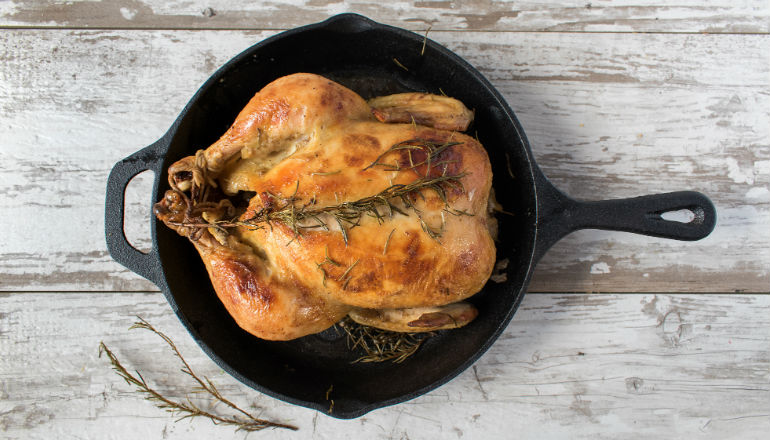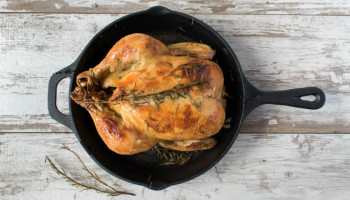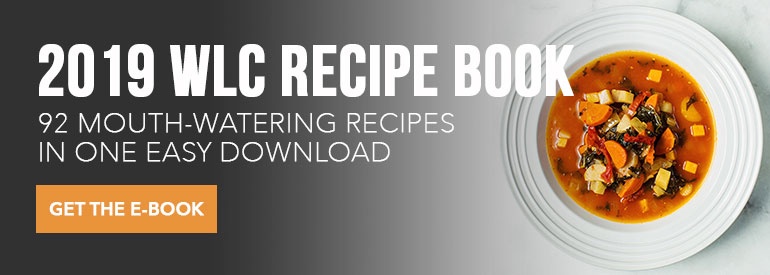 Reading Time: 3 minutes
Reading Time: 3 minutesHaving spent several years in the professional kitchen and many more than that cooking at home, I’ve found that the crux of being comfortable in the kitchen is a mastery of the basics.
Learning how to do a few fundamental things will give you the freedom to explore, experiment, and expose your palate to new flavors with confidence. To that end, I’m going to share some of the basics with you, starting with how to easily roast a whole chicken.
Once you know how to properly roast a chicken, you’ll have the basic protein ingredient for numerous other meals. A roasted chicken provides enough meat to make a great dinner for two or for a couple meals if you’re cooking for yourself. The possibilities for leftovers are pretty endless, from chicken salad to chicken tacos. Finally, in spite of its simplicity, roasting a whole chicken makes for a beautiful centerpiece dish. Right from the oven to the table, it sets the stage for an elegant (but easy) dinner.
And I promise, once you learn how simple and quick it is to roast a whole chicken, you’ll never buy one of those pre-made chickens from the grocery store again.

The Basics of How to Roast a Whole Chicken
Once you learn how simple and quick it is to roast a whole chicken, you’ll never buy one of those pre-made chickens from the grocery store again.
Ingredients
- 1 whole chicken
- Salt
Instructions
-
Preheat the oven to 450 degrees.
-
Rinse the bird and pat it dry inside and out. Stuffing a couple of paper towels in the cavity while you pat the outside dry will do the trick.
-
Salt the chicken inside and out. Most of the salt will end up on the breast, but turn the bird on its side to get the legs and between the thighs and body. You should be able to see the salt, almost like a crust. A pretty good rule of thumb is to use a teaspoon for every two pounds. Note: You can salt the chicken up to two days in advance of cooking in order to "dry brine" it. If you do this, store the bird in the refrigerator, loosely covered. At the very least, try to give the salt 30 minutes on the bird before you put it in the oven. You will need to pat the bird dry again before it goes in.
-
While trussing a bird is a useful skill, you can just tie the leg bones together tightly and tuck the wings behind the back to keep the bird tight while it cooks.
-
When the oven is preheated, also heat an oven-proof saute pan on the stove. When it's hot, put the chicken in the pan. It should sizzle. This will help to keep the chicken from seeping juices as the pan heats up in the oven. Juices in the pan means steam and steam means less browning — and we all love a golden brown bird!
-
Put the chicken in the oven. For a bird that is 3-4 pounds, cook it for about 50-55 minutes. If the chicken is larger, you'll obviously have to go longer. A thermometer inserted in the leg should read 165-170 degrees when the chicken is done.
Recipe Notes
Now that you have this knowledge, you can move on to experimenting with both dry and wet brines, as well as seasoning rubs and stuffings. Try it next time with pepper, rosemary, or whatever sounds good to you.
Keep in mind that if you stuff the chicken, it's always a good idea to pre-cook the stuffing a bit. You'll want the stuffing to be 170 in the end also, and it will always cook more slowly than the bird.







